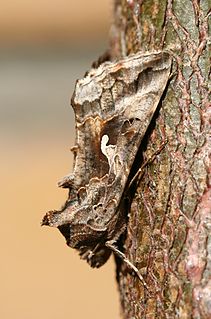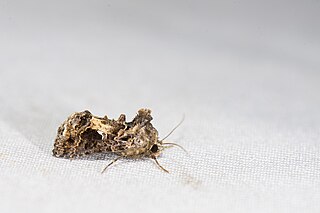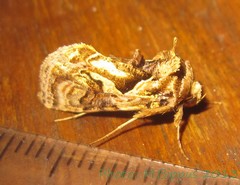Adiaphoron (, plural: adiaphora from the Greek ἀδιάφορα, is the negation of διάφορα, meaning "not different or differentiable".
Mubah is an Arabic word meaning "permitted", which has technical uses in Islamic law.
Ikhtilaf is an Islamic scholarly religious disagreement, and is hence the opposite of ijma.
Often synonymous to anti-foundationalism, non-essentialism in philosophy is the non-belief in an essence of any given thing, idea, or metaphysical entity. Non-essentialism might also be defined cataphatically as the belief that for any entity, there are no specific traits or ground of being which entities of that kind must possess in order to be considered "that entity."

Plusiinae is a smallish subfamily of the moth family Noctuidae. As the Noctuidae appear to be a paraphyletic assemblage, the Plusiinae may eventually be raised to family status.
The Leipzig Interim was one of several temporary settlements between the Emperor Charles V and German Lutherans following the Schmalkaldic War. It was presented to an assembly of Saxon political estates in December 1548. Though not adopted by the assembly, it was published by its critics under the name "Leipzig Interim."

Ctenoplusia is a genus of moths of the family Noctuidae.

Ctenoplusia vittata, commonly known as the streaked plusia, is a moth of the family Noctuidae. It is found in Africa, the Arabian Peninsula, Madagascar, Saint Helena, Tripolitania, the Near East and West Pakistan.

Ctenoplusia camptogamma is a moth of the family Noctuidae. It is found in Africa including Kenya.

Ctenoplusia limbirena, the Scar Bank gem, or silver U-tail, is a moth of the family Noctuidae. It is found in south-western Europe, Africa, the Canary Islands, Arabia, the southern Himalayas, India, Sri Lanka, Indochina to south-eastern China, Taiwan, Sulawesi, Bali and Timor. In New Zealand, it has been established since 2011.

Ctenoplusia albostriata, the eastern streaked plusia, is a moth of the family Noctuidae. It is found in India, Sri Lanka, eastern Asia and the Pacific, including Borneo, Hong Kong, Vietnam, Japan, most of Australia and New Zealand.
Ctenoplusia chillagoes is a moth of the family Noctuidae. It is found in Queensland.

Ctenoplusia furcifera is a moth of the family Noctuidae. It is found in south-east Asia and the Pacific, including India, Taiwan, Australia and New Guinea.
Gorybia is a genus of beetles in the family Cerambycidae, containing the species:

Ctenoplusia dorfmeisteri is a moth of the family Noctuidae. It is found in western, central and southern Africa, where it's known from Congo, Nigeria, Gabon, Ghana, South Africa, Mauritius, Réunion and from Yemen.
Siccia adiaphora is a moth in the family Erebidae. It was described by Sergius G. Kiriakoff in 1958. It is found in Kenya and Uganda.
Gorybia adiaphora is a species of beetle in the family Cerambycidae. It was described by Martins in 1976.
Ctenoplusia fracta is a moth of the family Noctuidae first described by Francis Walker in 1858.

Cryptodaphne adiaphora is a species of sea snail, a marine gastropod mollusk in the family Raphitomidae.








